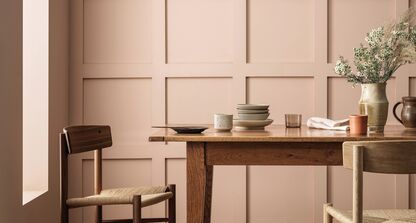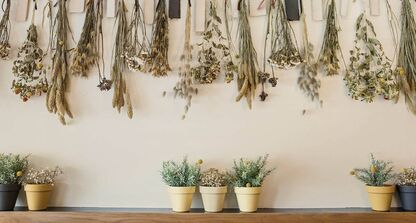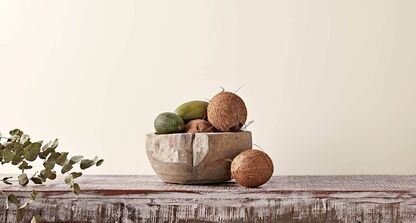How to Choose the Right Kitchen Tiles
The kitchen is a room that gets a lot of traffic; cooking, children, pets and more all run through this room, which is often the hub of a home. So when choosing what type of tiles are best for kitchens, practicality and durability are just as important as aesthetic. It can be hard to navigate the seemingly endless choice of tiles available, especially when there are both floor and wall tiles to consider. We’ll guide you through these choices so you can make your kitchen tailored to you.
What material kitchen tiles to use
When it comes to choosing kitchen tiles, the first decision you need to make is on material. This factors in things such as budget and the long-term practicalities
Natural stone tiles
Natural stone is the more expensive choice, but it does create a characterful look for your kitchen. It has a certain beauty to it that is unique; whether you want a rustic feel or a sophisticated look, natural stone is a good choice.
However, natural stone isn’t for the faint-hearted. These tiles need extra protection, so need to be sealed frequently. They also can’t be cleaned with regular products from the supermarket as the chemicals are too harsh; you need special cleaning products designed specifically for stone tiles.
Types of natural stone tiles available:
- Marble - a popular choice for its pretty vein pattern. It can come in both lighter and darker varieties, but is more common as a wall tile than a floor tile because it can be a slip hazard when polished
- Limestone - can also come in a variety of colours, from cream and beige to grey and other darker shades. This can be used as a floor tile, but be sure to get a hard wearing variety!
- Travertine - known for its textured surface, this is a good choice of material for an interesting addition to your kitchen. Often, the grooves are filled in when used in this setting
- Slate - the bold, dark tones of slate can be used as a statement piece both on the floor or the walls. They are particularly good as floor tiles due to their texture, which provides good slip-resistance
Man-made tiles
You’ll find the most variety in man-made tiles. They are also the most affordable option too. The other benefit of man-made tiles is that they can mimic the appearance of other materials, giving you the best of both worlds.
- Ceramic tiles - these are best suited to walls, though there are some that can be used as floor tiles. If you want to use them on your floor, you need to check when buying them because not all ceramic tiles are durable enough. They are smooth so are very easy to clean and don’t require a lot of maintenance because they don’t need any sealant
- Porcelain tiles - the most hard wearing variety available. Because they’re created using higher temperatures, this type of tile is denser and able to withstand a lot more. This makes them ideal for floor tiles, but if you like the aesthetic they’re great on the wall too
- Glass tiles - an excellent way to add a bit of sparkle to your kitchen. These are mostly used within mosaics for the perfect feature piece. They can also be coloured for a vibrant look
How to choose kitchen floor tiles
As you would expect, kitchen floor tiles need to be the most durable. Porcelain or natural stone will last the longest (if they are cared for properly) in such a busy setting. However, if your kitchen is one that is well-loved, full of muddy paws or little bakers, then it is best to avoid natural stone as they can stain if not sealed properly.
A tiled floor is one of the best options for a kitchen, but it might not quite fit with the look you’re going for. That’s why you can get the best of both worlds by using tiles with effects.
Wood effect
These tiles bring a warmth to the kitchen as they give a natural wood feel. Using realistic patterns of knots and grains, they’re the ideal solution to keep the wood aesthetic without the risk of scratches and stains. They can also be rearranged in different patterns, making them more versatile than actual wood, as well as easier to clean!
Concrete effect
The grey tones of concrete effect tiles are perfect for a minimalist look. They are durable and simple - great for contemporary decor. The colour also makes it easy to pair these tiles with a wide variety of colours if you wanted a splash of vibrancy on the walls.
Patterned
Patterned tiles are a bold choice for the kitchen floor. They certainly make the room visually interesting and draw the attention of your guests. As floor tiles they can also be useful for sectioning off different areas of one room - for example, the dining area.
How to choose floor tiles colour
There is no correct answer to this question - it’s all about what you like! Factors to consider include:
- Balancing out the light and dark - if you have dark wall tiles, such as slate, be careful not to go overboard with too many dark tones when it comes to your floor tiles; it may make the space feel cramped and smaller than it really is
- How messy your kitchen will get - homes are made to be lived in so it’s understandable that your kitchen might get messy; you may want to consider a slightly darker colour to help with this
How to choose kitchen wall tiles
Kitchen walls can vary from having tiles in just one small area to being completely tiled. Either way, it is likely that you will have at least a splashback region above the stove. This is the perfect place to experiment with different colours and shaped tiles.
Shaped tiles
Rather than creating a rectangular area of tiles for your splashback, why not use a more unusual shaped tile like a hexagon, and let the tile shape the edges?
Wall tiles don’t have to be flat; they can have a bevelled edge, which can add some texture. It’s also an effective way of reflecting light to make the space look bigger and liven up a plain wall.
Layout
Gone are the days of tiling in a standard grid formation. Now, your kitchen tiles can be used in a chevron or a herringbone pattern to give some variety.
Grout
Most people don’t realise that grout can be a design feature in itself. Choose a contrasting colour of grout to your tiles to make them stand out and become a real focal point of the room.
Colour
This depends on the colour theme of your kitchen as you don’t want the colour of your wall tiles clashing with the colour of your countertops or cupboards. Lighter colours are a good choice, particularly for small kitchens, and are a safe choice if you already have a bold colour in your kitchen.
If using brightly coloured or patterned tiles, use them more as a feature piece rather than for the entire room. This avoids the room becoming cluttered with too many focal points and draws more attention to the colours that you actually picked.
The kitchen is such a busy and social place it’s important to choose the right tiles so it looks and feels like home - and will stand the test of time. It is ultimately about what feels right for you, while factoring in how easy it will be to maintain. There is a lot of creative freedom when it comes to tiling, so your kitchen can be unique to you.







